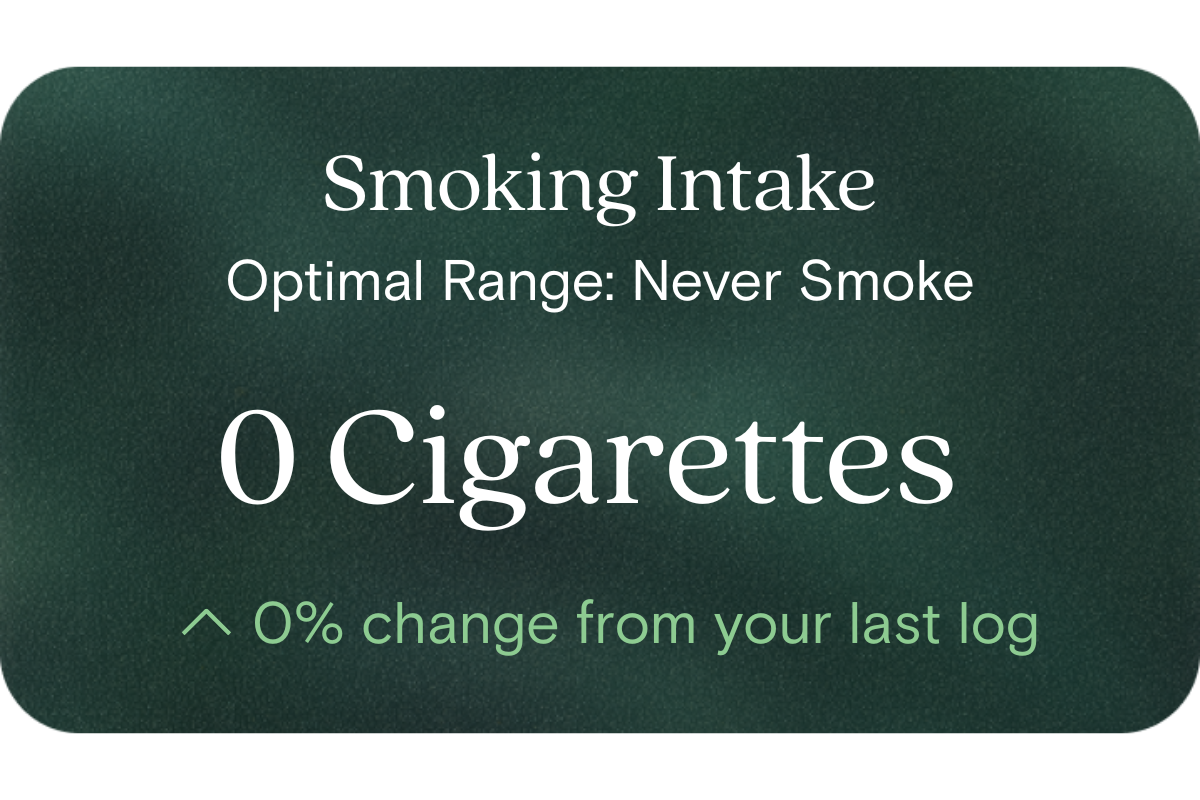What is smoking intake?
Smoking intake measures the number of cigarettes, cigars, or vapes consumed each week. It provides a clear indication of your current tobacco exposure and helps track progress if you’re reducing or maintaining a smoke-free lifestyle.
Why does it matter for long-term health and wellbeing?
Monitoring smoking intake supports proactive health management by helping you understand how lifestyle choices impact your energy, recovery, and overall wellbeing. A lower or zero intake is linked to improved oxygen capacity, sleep quality, and resilience.
What’s an optimal level of smoking intake?
The optimal level is 100% = never smoke.
Typical reference range for this biomarker:
- 20% = any amount of smoking, with no motivation or readiness for changing the habit
- 40% = reduction in the number of cigarettes, cigars or vapes per week
- 60% = gave up smoking within the last 5 years
- 80% = gave up more than 5 years ago
- 100% = never smoke
What influences smoking intake levels?
Factors such as stress, social habits, environment, and motivation for behaviour change can influence smoking patterns. Setting specific goals, tracking weekly progress, and maintaining supportive routines all contribute to better control.
What does it mean if smoking intake is outside the optimal range?
If smoking intake is higher than the optimal range, it may reflect lifestyle patterns that limit energy, endurance, or recovery. Reducing consumption or working towards quitting can help the body restore its natural balance and improve overall wellbeing.
How can I support healthy smoking intake levels?
Creating supportive habits such as regular physical activity, mindfulness, and balanced nutrition can reduce reliance on smoking. Tracking your intake and celebrating small improvements helps reinforce progress toward becoming smoke-free.
This information is provided for general health and wellness purposes only and does not replace medical advice.
References
- Australian Institute of Health and Welfare. Tobacco and e-cigarettes (Alcohol, Tobacco & Other Drugs in Australia).
- Tobacco in Australia. Prevalence of smoking—adults.\
- Banks, E., Joshy, G., Korda, R. J., et al. (2015). Tobacco smoking and all-cause mortality in a large Australian cohort study: findings from a mature epidemic with current low smoking prevalence. BMC Medicine, 13, 38.




















.png)
